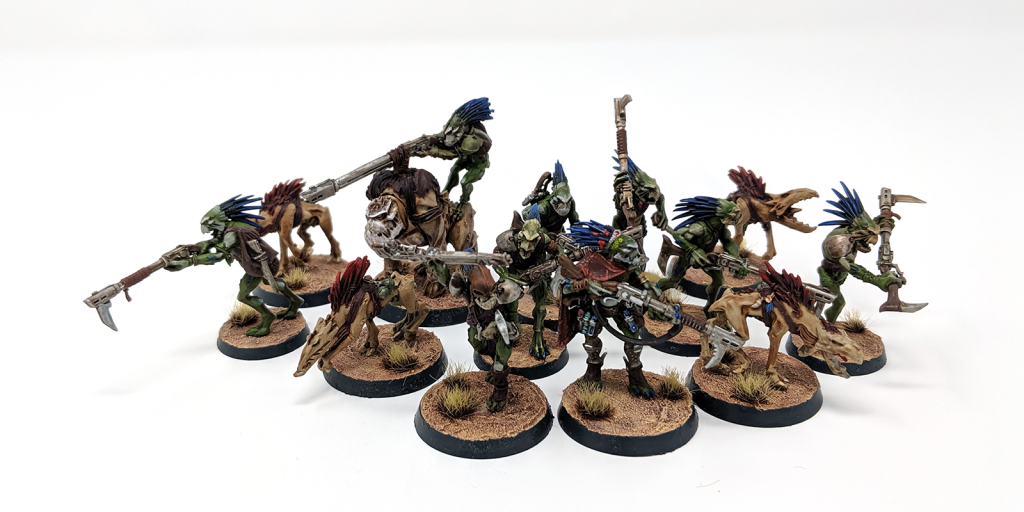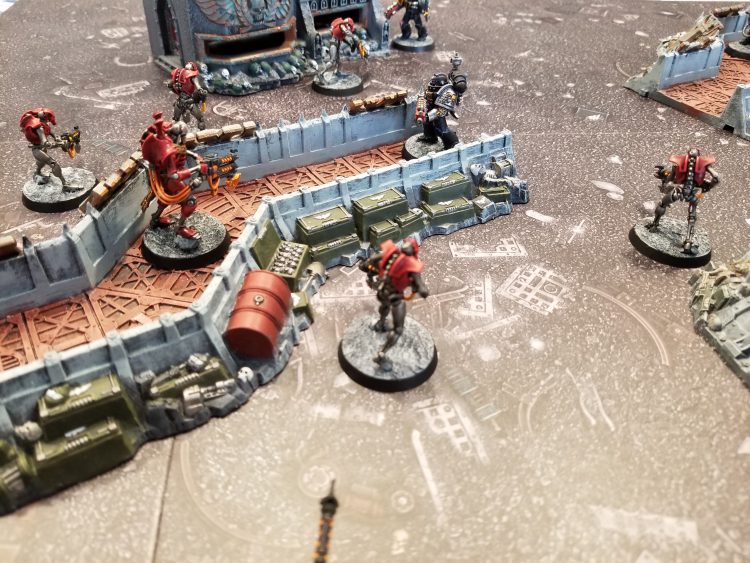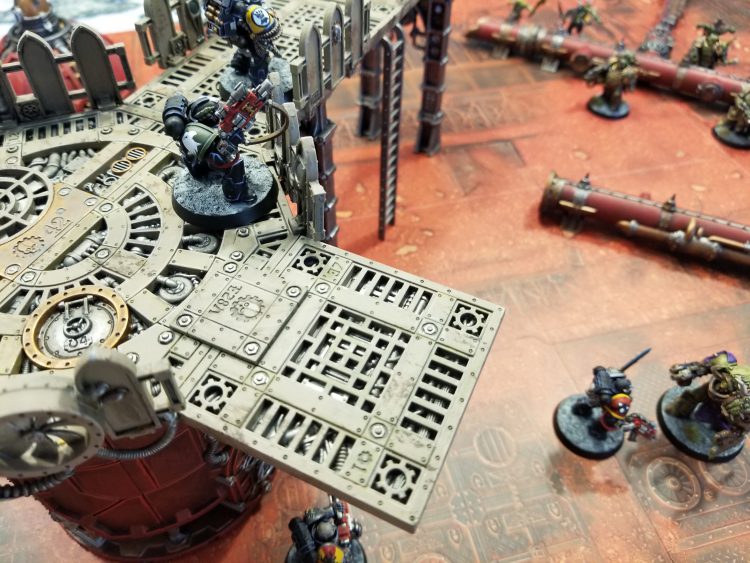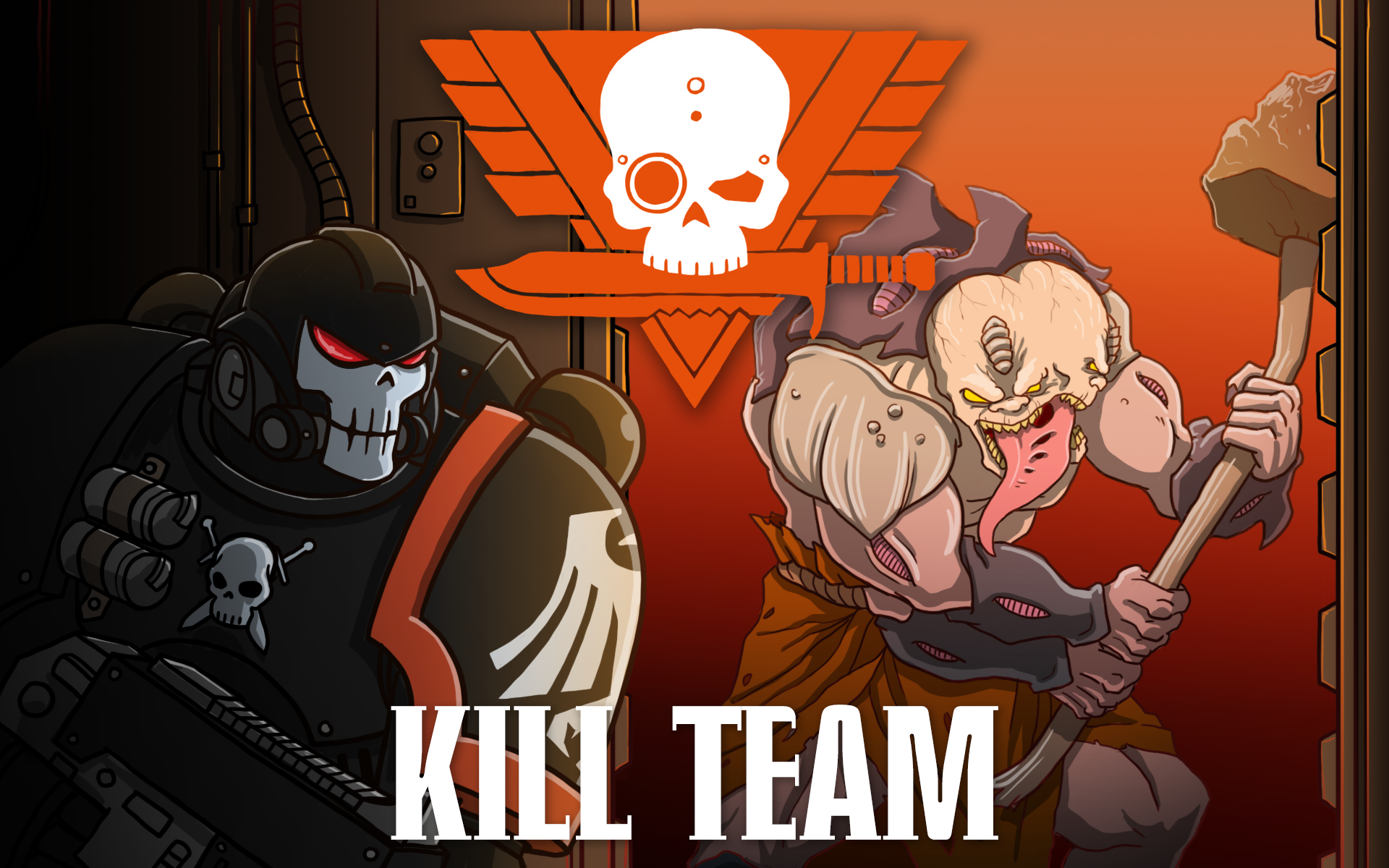It’s an exciting new time for Kill Team: We just had a major release with Pariah Nexus that gave us new marine units and a much-needed update for Necrons. If you missed our coverage of the factions, you can find our tactics articles on them here – Marines and Necrons. To add to all of that, a new packet just dropped laying out new rules for competitive Kill Team events that combines some of the most popular format rules. Competitive play rules like those in the Champions packet are usually tested across multiple play groups and vetted before publication. These rules can have a major impact on how Kill Team is played globally, and the presented formats add a lot of additional considerations to the game. And don’t think that they’re for competitive players only – even if you’re a casual player, it’s worth playing a few games with these rules. The basic missions in the Kill Team Core rulebook leave a lot to be desired and tend to favor a specific playstyle and build of roster. These missions mix things up in interesting ways, adding more flexibility and supporting a wider range of builds.
If you haven’t seen the 2021 Kill Team Championships packet, you can find it here.
This new packet was written by Killteamstream (Sheldon Steere), one of most active Kill Team Tournament Organizers out there and certainly someone who has invested a significant amount of money and time. Before I even get into reviewing/breaking down the packet, I want to start with saying that I think this packet is excellent.
Overview
This packet has taken the three most common and popular competitive packs for Kill Team and combined them into one “Master Packet”. These ways include the traditional GW-style missions based around holding objectives for primary scoring, Kill/Hold primary scoring similar to the ITC missions, and Commander formats.
Primary Objectives
The primary objectives are the main ways of scoring in each mission and the major ways that each of these formats differs from the other two. This packet is written to support all three major play styles: Hold and Kill/Hold at either 100pts or 125pts and Commander at 200pts. Each of these and the rules for roster construction are described within the packet. All of the secondaries have been combined to be playable with any of the primary objectives types, which is an excellent change that makes transitioning from one format to another much easier. At the end of the primaries section, there is an addendum of special rules. This addendum adds some subfaction rules to teams that never received any, and makes some corrections/changes to roster limits (like correcting the believed typo of maximum repentia). More on those changes below.

A Note on Subfactions
The LVO rules added their own addition rules for subfactions for some of the newer/less-supported Kill Team factions like the Servants of the Abyss, Chaos Daemons, and Sisters of Battle. Those are referenced in this document as well, and are worth looking into if you’re interested in these formats or just playing casually with them. We’ve covered those subfactions in each of the relevant kill team tactics articles we’ve done on those factions, and if you’re looking for the subfaction rules themselves, you can find them here. They’re a big help to some of the lesser factions, but not really strong enough to push them over the top – mostly they just help bring up the floor. Additionally the packet gives Daemons and Sisters of Silence some Commander options.
Note as well that this packet adds a few additional special rules designed to address balance issues in Kill Team:
- Kroot – Increase the MAX number of Krootox Riders to 4 and increase the MAX number of Kroot Hounds to ‘ – ‘ (no max)
- Elucidian Starstriders – increase the MAX of “Voidsman” to ‘ – ‘ and increase the MAX of “Voidsman Gunner” to 2.
- Adepta Sororitas – increase the MAX of “Sister Repentia” to ‘ – ‘
- Adeptus Astartes – Death Denied costs 3 Command Points.
- Death Guard – increase the MAX of “Plague Marine Fighter” to 3.
- Harlequins – In Non-Commander Formats Psychic powers (other than Perils of the Warp) cannot target more than a single Harlequin Player model each turn. If that model dies, then no more psychic powers may be used that turn.

Secondary Objectives
The biggest break from the standard Kill Team rules is that missions in the Champions packet have secondary objectives that players choose from similar to missions played in Arena. There are three secondary categories – Action, Movement, and Special Secondaries – from which players must pick three before the game begins, and each player may only select a maximum of two from the same category. Additionally, these secondaries are not hidden, so you and your opponent have full knowledge and can plan accordingly. There are some new(ish) secondary choices here that have been tested at various events that Sheldon has been involved with, so before you get up in arms about “house rules” keep in mind that these have been tested at events amongst the community at large. One final inclusion in the secondary section is the D12 table, this allows for random secondary choice generation by TOs. This table gives randomly generated, limited lists of secondaries that can be chosen from for that round. In addition to these secondary objectives at the end of the Secondary section there are some additional generic Tactics that add some extra value to each game.
These secondaries tend to be heavily dependent on your opponent and are chosen after you know what your opponent’s team will look like for the game. So while it’s a good idea to have a “short list” in mind of the ones you’ll be most likely to accomplish given your own team, you’ll very likely need to make decisions on the fly about which secondaries you’re choosing given your opponent’s roster. Action secondaries tend to focus on taking models out of action or forcing more injury rolls and so are better picks against horde teams. Movement secondaries either reward controlling more of the battlefield and so are good against elite teams or reward being a horde team, and Special secondaries are more of a grab bag that will likely depend on your team’s loadouts.
Finally it’s worth noting that in non-Commander formats, Kill Teams generate an additional 1 CP per round – so 2 base, 3 if your leader is on the board.
Killzones
The next section includes a recommended terrain layout and setup guide, starting with Open Battleground games, then Arena and Pariah Nexus setups. Afterwards there is a breakdown of Arena/Nexus board and door rules, as well as some additional Arena/Nexus specific Tactics.
Missions
There are 6 missions included in the packet, that are able to played on any table environment (Open battlefield, Arena, Pariah Nexus). In each mission there is a specific bonus that can scored in addition to your primary/secondary points. After the missions there is a breakdown of Tournament Guidelines such as pre game sequence and clock rules.
Scoresheets
At the end of the packet there is scoresheets for each of the 3 primary game types, as well as a blank Roster.

Building Competitive Kill Teams for each format
So what kind of teams will do well in these different mission formats? If you have been a competitive Kill Team player, this should sound slightly familiar.
Hold3
The Traditional GW Hold style Primary objectives tend to favor teams that can bring a lot of bodies, in order to control objectives easier. This means that horde-based factions and teams will do much better. So teams like Chaos Space Marines, Tyranids, and Tau drone spam tend to dominate these formats – they flood the objectives with cheap, mobile bodies early and force their opponent to try and push them off.
Kill/Hold
The Kill/Hold format allows for more Kill team variance in regards to what kinds of teams will do well. The addition of ITC style kill primary makes lethal teams with a moderate amount of bodies (7-12) very competitive, since they are able to hold objectives while still tearing into their opponents. Horde teams tend to suffer in this format since they’re likely to lose models quickly and give up “kill more” primary objective points every round, though teams that run too small with elite models like Custodes will do well on kill/kill more but still struggle to hold objectives.
Commander
The Commander format is really reliant on what commanders a faction has access to, as far as Kill Team advantage goes. The extra wrinkle here is that you can score another 9 VP for Commander-related actions: A Commander can score you primary VP for taking out a lot of enemy models and you can score 3 VP for downing a Commander. While in traditional Commander formats you’d be better served taking the cheapest Strategist you could find and loading up on bodies, this gives a little more value to taking commanders who can drop enemy models, and will benefit Psyker Commanders in particular. That said, building around sniping an enemy Commander and playing keep away otherwise is a perfectly valid strategy.
Arena
Thanks to the packet incorporating Pariah Nexus rules and adding two new tactics – Close Door and Blow up a Door – Arena missions in this packet aren’t nearly as punishing for smaller, elite teams. Holding a door shut is no longer an option for horde teams you face, and your elite teams have CP-based options for manipulating doors out of sequence. They’ll still struggle to cover ground and open/close doors generally, but the disparity won’t be quite as bad. Smaller teams with more range get an added boost from models not suffering the penalty for firing at long range. This means that mid-sized teams of 7-8 models are likely going to have more play in Arena killzones.
Final Thoughts
Overall I would say that this packet is the GOAT of KT event packets – you can easily run an event with it (or just play with some friends), everything is spelled out and easy to use. If you’re running a Kill Team event it’s worth looking at and even if you’re playing casually, these rules are worth a look, since they can really help balance the game and force you to shift strategies. If you’re used to playing standard Kill Team Matched Play missions you’ll likely find an entirely new playstyle worth checking out in the Kill/Hold format.
That wraps up our look at the 2021 ITC Kill Team rules. There’s a lot to think about here and we’ll likely revisit some of this as we cover events during the year. In the meantime, if you have any questions or feedback, drop us a note in the comments below or email us at contact@goonhammer.com.


